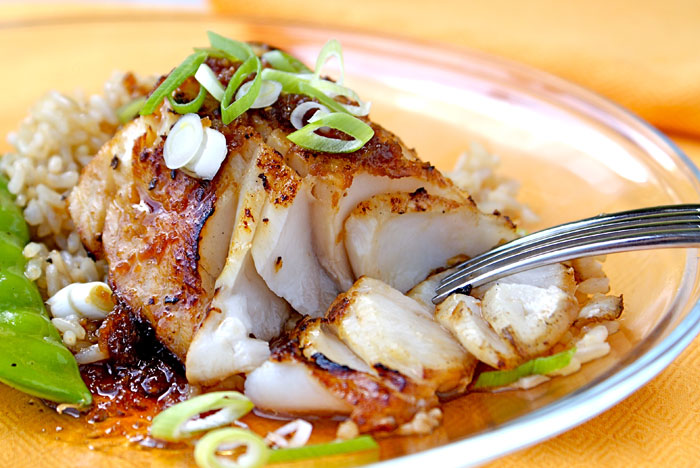The sablefish is found in the Pacific, near the continental shelf and its embankment. Its range extends from Baja California to British Columbia and Alaska to the north, and then to Kamchatka and Japan to the west, via the Bering Strait. Adults live near the bottom on soft substrates, at depths up to 2700 meters. Young individuals migrate to coastal waters and spend several years in shallow waters, then become adults and migrate offshore. Know the following important information before enjoying sablefish taste.
Description of the species
The sablefish has a thin, elongated body covered with small scales. The mouth is large and decorated with very small teeth, and the tail is slightly forked. The back is dark gray, often marked with large pale spots, and is surmounted by two dorsal fins very spaced. The belly goes from pale gray to white. The sablefish can grow to a fairly large size; it can measure more than one meter and weigh from 11 to 25 kilograms. It lives a long time, some captured individuals being over 80 years old.
The life cycle of sablefish
But what is sablefish? The sablefish (Anoplopoma fimbria), often referred to as black cod or black cod sablefish, inhabits the waters of the shelf and escarpment to depths of 1500 m from Baja California to Japan. They are most abundant in northern BC and the Gulf of Alaska. While there is sufficient movement between areas to consider sablefish as a single population genetically, adult movement is limited enough to allow assessment and management on a smaller scale. Independent assessments are conducted by the U.S. National Marine Fisheries Service in the Bering Sea, the Gulf of Alaska and Washington, DC and California.
The recruitment of sablefish varies according to the strong year-classes that occur periodically. It is believed that the production of strong year-classes is related to a higher abundance of copepods during favorable environmental conditions. The long life of this species is likely a strategy for survival during extended periods of low recruitment due to adverse environmental conditions.
Sablefish is very popular and because of the sablefish nutrition, it is usually served in sumptuous dishes. In this article, we will also give a sablefish recipe made from sablefish that is quite luxurious because it is combined with foie gras.
Here’s a sablefish recipe that uses foie gras:
The sablefish is an extraordinary fish to cook. Its white, greasy pulpit is reminiscent of salmon. Its fine and delicate flavor blends perfectly with the rich and velvety taste of foie gras. This dish is enhanced with sprouted lentils that give it a touch of crunchiness and a tasty vegetable mash potatoes.
For 4 people
– 500 to 600 g of sablefish
– 1l of homemade chicken broth
– 100 g of foie gras
– 100 ml of cream
– Salt, pepper and fresh herbs (for example sage, rosemary, thyme, etc.)
– Mashed vegetables (celery root, squash, etc.)
– Brunoise of root vegetables (carrots, turnips, parsnips, celery root, etc.)
– Garnish bacon or frayed braised meat (it could be a candied duck stock), marinated onions (add beetroot in your marinade mixture to color the onions) and sprouted lentils.
Method
– Prepare mashed potatoes and brunoise.
– In a non-stick skillet or heavy-bottomed skillet, cook cod over medium-high heat. Start by the side with the skin and grasp it until it is crisp (4-5 minutes). Return the cod to finish cooking (4-5 minutes). Salt and pepper.
– Reduce the 2/3 broth with the herbs. Add the foie gras, the cream and mix the broth with a giraffe. Switch to Chinese stamen. Correct the seasoning and keep warm.
– Spread mashed potatoes on a warm plate. Drop the cod. Add the brunoise and garnishes. Sprinkle with the foie gras sauce and serve.
Now you have known how to cook sablefish. Are you ready to cook it? Want to know where to buy sablefish? Our recommendation is globalseofoods.com.
Thank you for your time and enjoy the cod!





